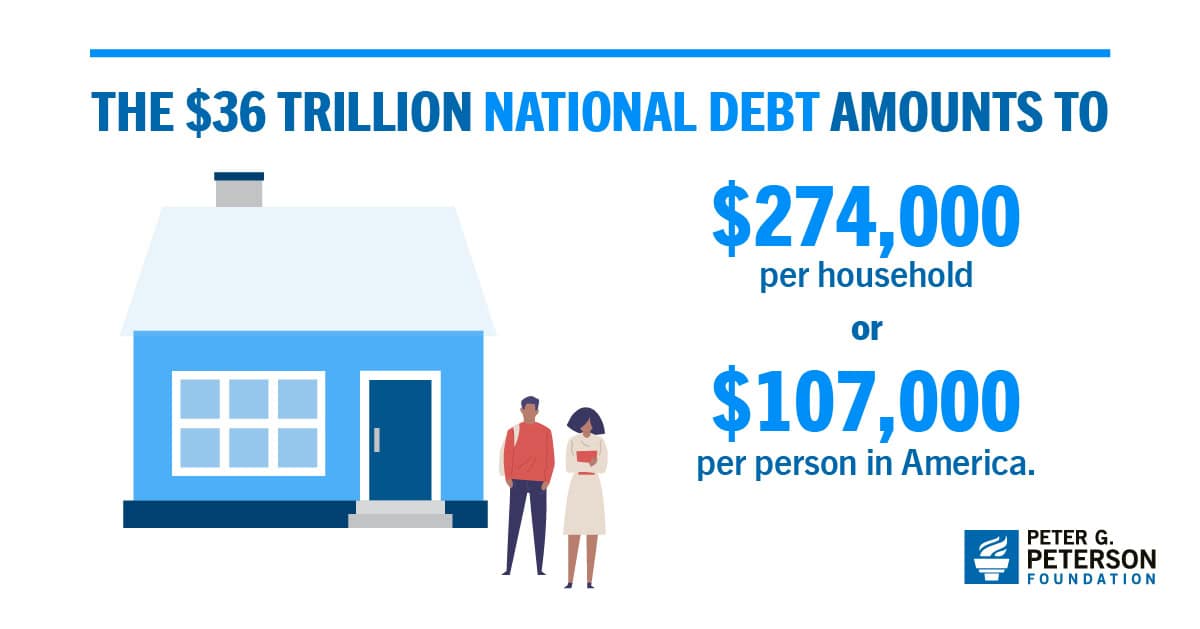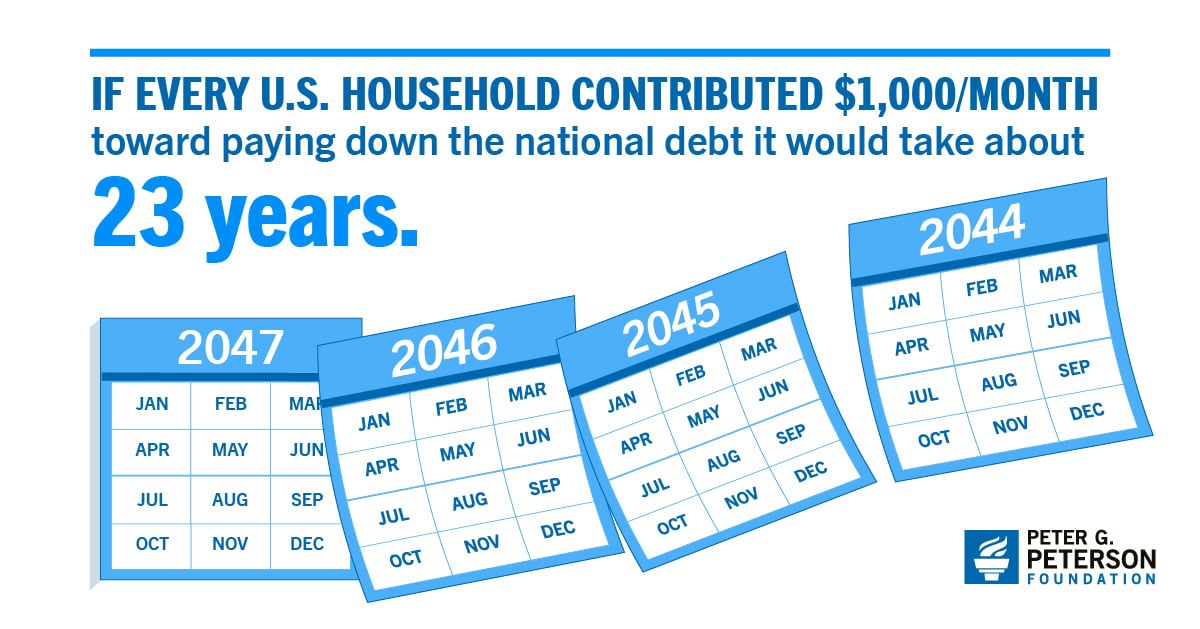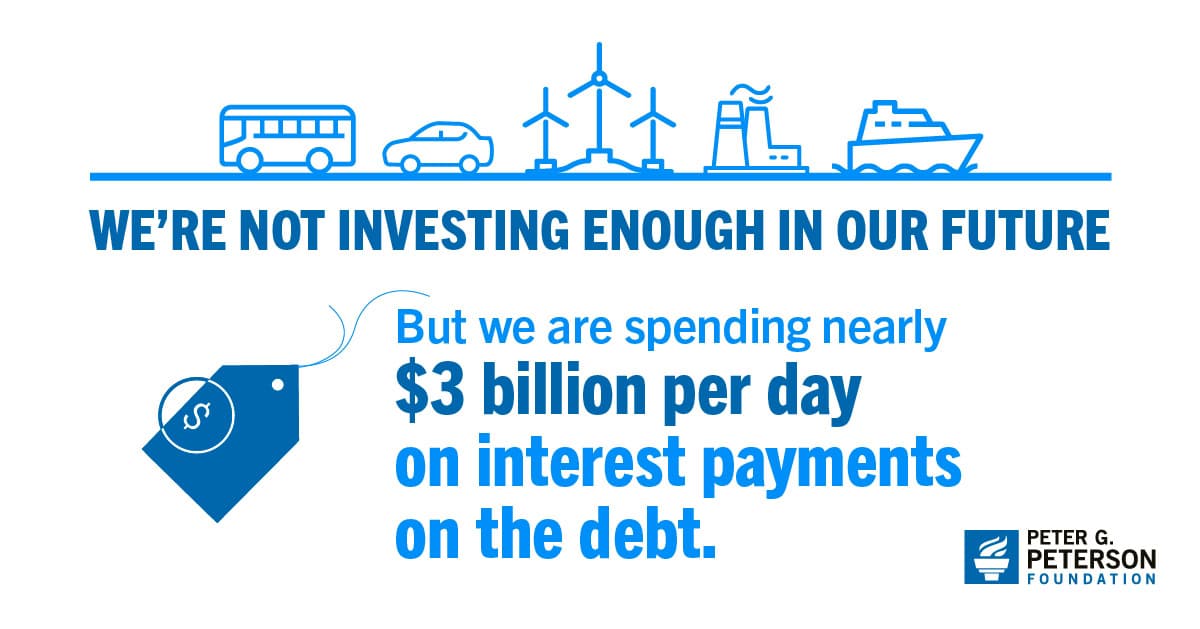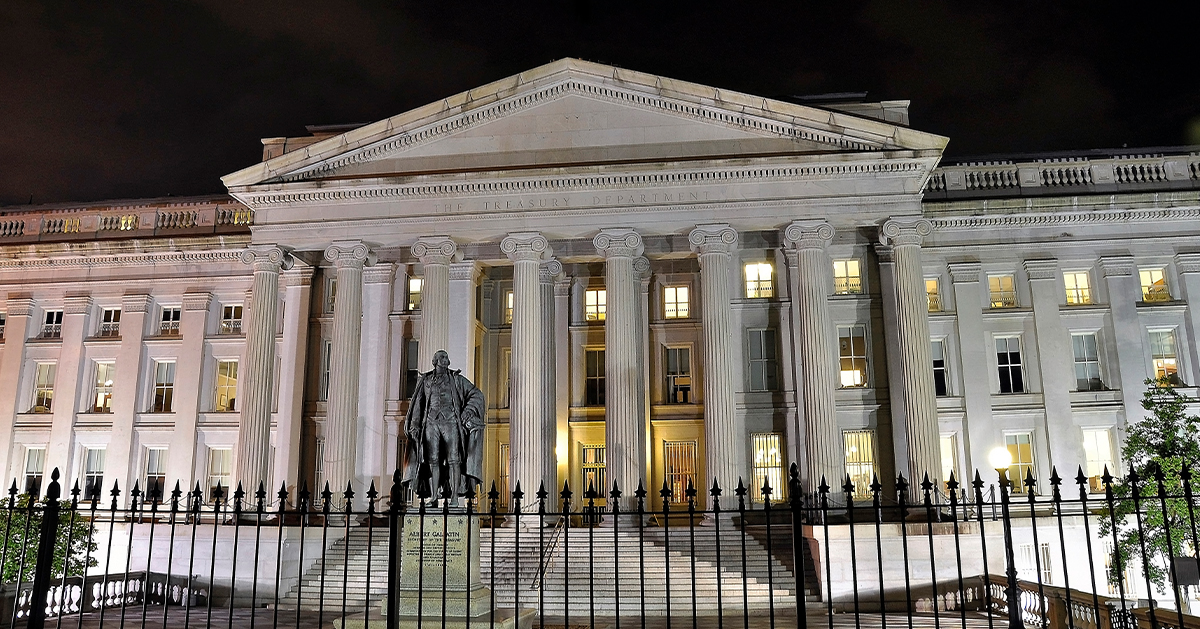Infographic: The National Debt Is Now More than $36 Trillion. What Does That Mean?
Last Updated November 22, 2024
The gross federal debt of the United States has surpassed $36,000,000,000,000. Although the debt affects each of us, it may be difficult to put such a large number into perspective and fully understand its implications. The infographic below offers different ways of looking at the debt and its relationship to the economy, the budget, and American families.
The $36 trillion gross federal debt includes debt held by the public as well as debt held by federal trust funds and other government accounts. In very basic terms, this can be thought of as debt that the government owes to others plus debt that it owes to itself.
America’s high and rising debt matters because it threatens our economic future. The COVID-19 pandemic rapidly accelerated our fiscal challenges, but we were already on an unsustainable path, with structural drivers that existed long before the pandemic. Putting our nation on a better fiscal path will help ensure a stronger and more resilient economy for the future.

Feel free to share this infographic on X.
Further Reading
What Is R Versus G and Why Does It Matter for the National Debt?
The combination of higher debt levels and elevated interest rates have increased the cost of federal borrowing, prompting economists to consider the sustainability of our fiscal trajectory.
High Interest Rates Left Their Mark on the Budget
When rates increase, borrowing costs rise; unfortunately, for the fiscal bottom line, that dynamic has been playing out over the past few years.
Debt vs. Deficits: What’s the Difference?
The words debt and deficit come up frequently in debates about policy decisions. The two concepts are similar, but are often confused.







